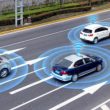Should FirstNet system be designed from the inside out?
During the Public Safety Communications Research (PSCR) stakeholders conference in June, two intriguing presentations were delivered that address some of the factors involved in projecting coverage models for FirstNet, both outdoors and inside of buildings.
Lots of great information was shared by PSCR staff members during these presentations, but a couple of key takeaways jumped out:
First, during a presentation by Nada Golmie and Richard Rouil on outdoor-coverage modeling factors, it was noted that the number of outdoor cell sites needed by FirstNet would decrease by one-seventh (more than 14%), if FirstNet only needed those cells to provide coverage outdoors—as opposed also providing enough coverage to also allow signals to penetrate inside buildings and provide coverage in those areas.
Second, during a presentation by Bob Johnk, tests showed that indoor coverage of a building on the University of Colorado was lacking from the PSCR demonstration macro network, despite the fact that the building is just a little more than a mile from the macro network’s base station. With a cell on wheels (COW) in an adjacent parking lot turned to very high power levels, LTE coverage inside the building improved, but the throughput was less than ideal and the batteries of devices used in the buildings drained quickly.
However, with a small-cell system located inside the building, there was marked improvement in coverage, data speeds and the device battery life was significantly better, Johnk said.
In other words, if sufficient indoor LTE coverage existed in buildings nationwide, FirstNet would not need as many large macro sites in its system, potentially saving costs in that portion of the network. In addition, as building owners increasingly use energy-efficient windows that greatly diminish—if not block entirely—radio signals from entering or leaving their facilities, the need for indoor coverage that does not rely on the outdoor macro network will become more necessary.
It’s a trend that’s already prevalent in the commercial arena. From distributed antenna systems (DAS) to pico cells to supplemental Wi-Fi networks, solutions to provide indoor coverage in even the most cavernous of buildings have increased greatly during recent years and are seen as “table stakes” by many. After all, building owners and wireless carriers do not want their reputations damaged by the fact that people cannot use their smart devices in their coverage area.
The trend also is moving to the government space, as well. Recently, the FCC revamped its E-Rate program to ensure that all schools and libraries can have broadband connectivity, and the program includes a special emphasis on the deployment of Wi-Fi systems in these facilities.
What could this in-building-coverage trend mean to public safety?
It means that the public should be able call 911 from almost anywhere indoor, and—by leveraging the location of the small-cell access point—have a fairly good idea where the caller is located. There is considerable debate about the readiness of the location technology, but the notion that first responders should have better location information for emergency calls made from wireless devices inside a building is a concept that the FCC has embraced.
Ubiquitous indoor coverage in the commercial space also could provide new options for indoor coverage for first-responder systems like FirstNet, potentially solving a longtime communications problem for public safety. Could the infrastructure used to provide indoor coverage for carriers be leveraged to provide coverage to first responders, as well, via roaming arrangements with carriers or on the public-safety spectrum licensed to FirstNet?













